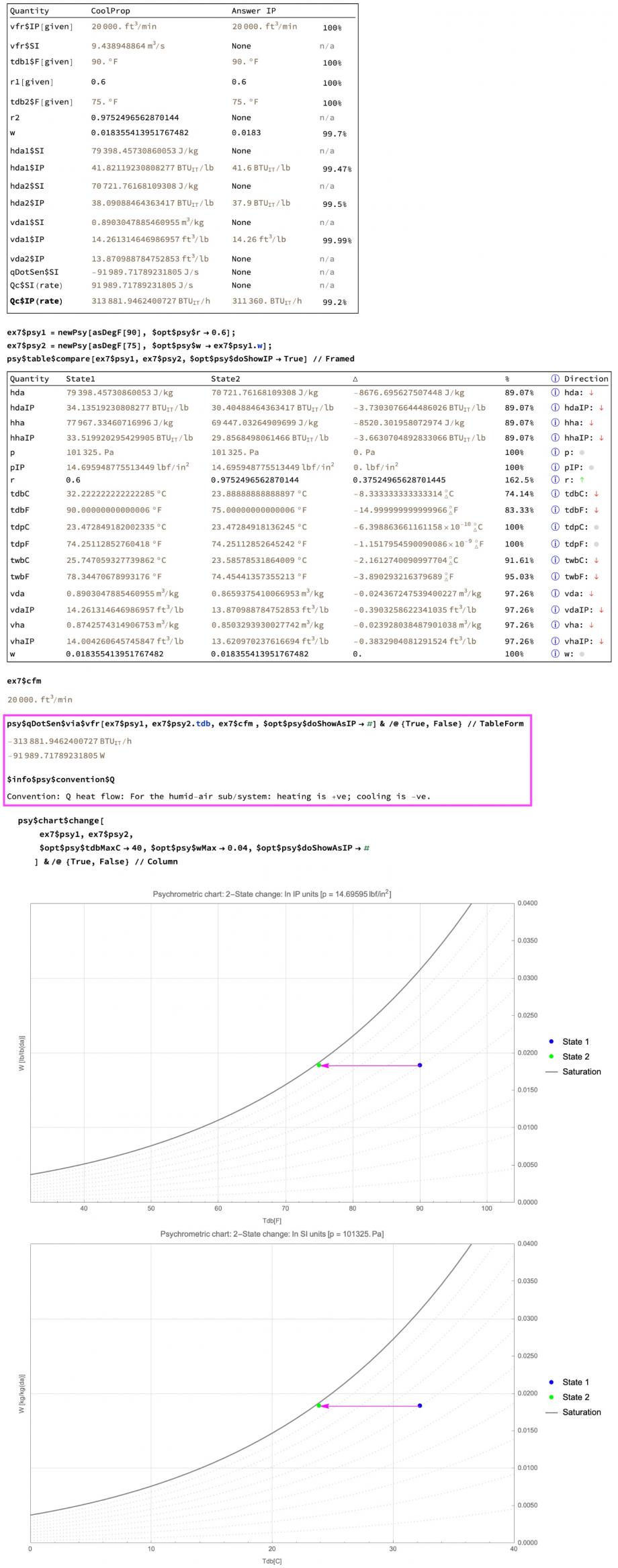In the question statement, the '20,000 cfm of air' is assumed to be the volumetric flow rate of the humid air mixture corresponding to the initial State 1 (entry to the humid air subsystem):
The course PDF Answers (where available) from the worked example problem are given in the 3rd column in the custom table at the top of the image in IP units.
When handled by the MPsy class, we have 2 objects representing the before and after states. Note how the humidity ratio 'w' of the 1st object is used to set the humidity ratio of the 2nd object, because it is assumed that there is no change in the contained water mass within the humid air.
The 2nd table that shows the differences between them, as well as indicating the change in each main psychrometric variable, and the "direction" of change.
We see that for a pure sensible cooling process (without condensation):
- The dry bulb temperature 'tdb' decreases.
- The relative humidity 'r' increases.
- The mass-specific enthalpy per dry air 'hda' decreases.
- The wet bulb temperature 'twb' decreases.
- The mass-specific volume per dry air 'vda' decreases.
- The humidity ratio 'w' and the dew point temperature 'tdp' are unchanged.
There is a dedicated Psy library function for calculating the sensible heat energy rate 'qDotSen' (in this case energy removed from the system so -ve).
Psy library convention).The psychrometric chart function shows both states, as well as an arrow indicating the change.


